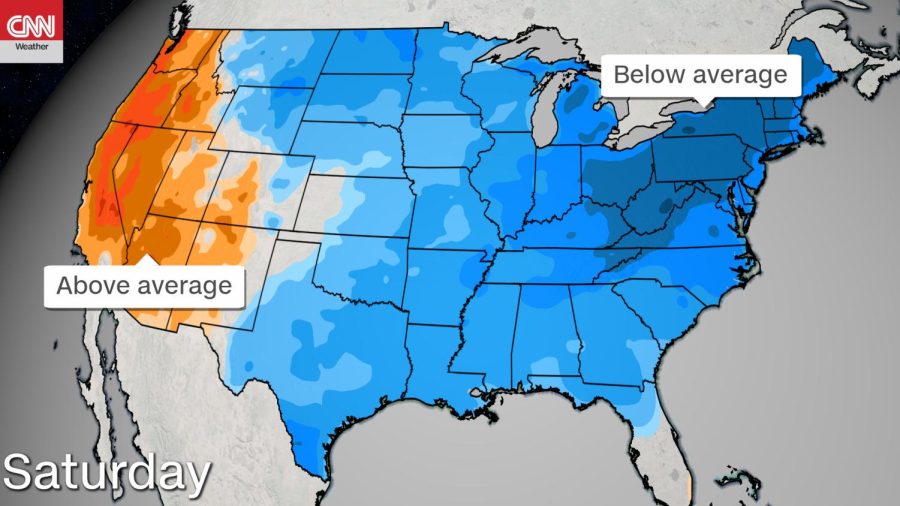Record heat returns to the West and record cold plunges into the East
Talk about a tale of two extremes across the country, with temperatures well below normal in the East and triple-digit temperatures bringing temps well above normal in the Southwest.
May 7, 2020
(CNN) — The country is divided roughly in half between temperature extremes, with cold conditions and well below normal temperatures in the East, and record-setting, triple-digit heat in the Southwest.
It will feel like summer out West and will feel like very early spring in the East.
“Heat watches, warnings or advisories cover roughly 14 million in the Southwest, including Phoenix,” CNN meteorologist Dave Hennen said.
The heat in the Southwest could build to record high temperatures tomorrow into Thursday.
Much of the desert southwest is under an excessive heat warning from Wednesday through Thursday. An excessive heat warning means that a period of very hot temperatures, even by local standards, will occur.
Check your local forecast temperature here >>>
“Afternoon temperatures of 104 to 108 expected,” the National Weather Service in Phoenix said.
Death Valley could see high temperatures hit 110.
Places such as Los Angeles won’t escape the heat. Downtown will see temperatures back into the mid-90s, while the beaches will get into the mid- to upper 80s. Average May temperatures in downtown are typically in the mid-70s.
“In contrast the eastern US will see temperatures as cold as 25 to 30 degrees below normal over the next several days and into the weekend,” Hennen said.
The temperatures in the East will be the exact opposite
Snow could even fall Friday into Saturday over parts of the Great Lakes and interior Northeast.
“This is certainly a powerful shot of Arctic air and will bring the coldest Mother’s Day weekend in quite some time,” CNN meteorologist Taylor Ward said.
Dozens of record lows are expected Saturday and Sunday from the Great Lakes and Northeast all the way to the Gulf Coast. Daily record low temperatures could be set from the Gulf of Mexico to Canada.
“Temperatures on Mother’s Day are likely to remain in the 40s across much of the Northeast,” Ward said, “with only a lucky few closer to the coast reaching the low 50s.”
These temperatures are what we would expect to see in early March, not the second weekend in May.
“The entire winter the US went without a strong ridge-trough pattern of this magnitude,” CNN meteorologist Brandon Miller said.
A ridge-trough pattern is when the jet-stream — a stream of strong winds in the upper atmosphere where jets fly — creates a meandering pattern across the United States. On one side it ushers in warm air and the other colder Arctic air.
Not having this pattern is why it was such a mild (and snowless) winter for the major East Coast cities.
“If we would have seen this pattern in January or February, with that deep of a trough and these strong temperature anomalies, you’d be talking temps well below zero and likely some major snowstorms along with it,” Miller said.
The-CNN-Wire
™ & © 2020 Cable News Network, Inc., a WarnerMedia Company. All rights reserved.









